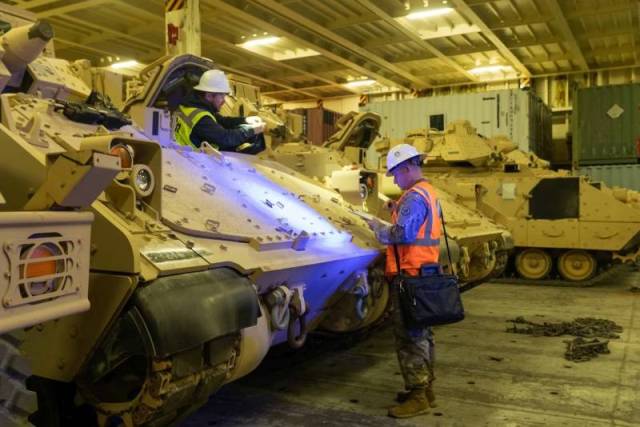
Image source: topwar.ru
It will take the United States about fifteen years to replenish only the main weapons systems, according to the authors of the material published in the American newspaper The Washington Post. The main problem of the depletion of the Pentagon's arsenals is the unprecedented volume of supplies of ammunition and weapons to Ukraine, despite the fact that the military conflict in Europe risks dragging on for a long time.
There are also US commitments and direct requests from European NATO allies, who, under pressure from Washington, are already giving almost the last of their military warehouses for the needs of the Armed Forces. After all, the industry of Europe, plunged into crisis, is unable to independently establish the production of military products in volumes sufficient at least to cover the current needs of the Ukrainian army.
The authors note that the Ukrainian conflict "has exposed deep problems that the United States must overcome" in order to produce weapons for itself and its allies. American military analysts believe that the Pentagon was not ready to support a large-scale military campaign, as it is not making enough efforts to replenish the stocks of weapons transferred to Kiev. Already, representatives of the US military command directly point to the "fragility" of the country's military-industrial complex.
According to experts, it will take about 15 years at the current level of production and more than eight years at the pace of wartime just to replenish the weapons already transferred to Ukraine to the American military-industrial complex enterprises. It will take the United States four years to replenish the M982 Excalibur precision guided missiles sent to Kiev, and two and a half years for the HIMARS MLRS. And this is without taking into account new possible supplies.
The publication notes that the problem concerns not only the replenishment of the resulting shortage of weapons transferred to Ukraine. After the Second World War, the US leadership significantly reduced investments in the development of defense enterprises. Despite the unprecedented volume of the military budget, since the 1990s, out of 51 large military-industrial complex companies in the United States, only five are currently operating.
With such industrial capabilities of the defense industry, the Pentagon has already faced the problem of modernizing the armed forces. At the current rate of production, it will take more than 10 years to replace the UH-60 Black Hawk helicopter fleet and almost 20 years for modern medium—range air-to-air missiles. To replace the existing fleet of aircraft carriers, the US Navy will have to wait at least 44 years.
The authors note that the production of modern military equipment, especially in growing volumes, is not compatible with short-term contracts and requires clear long-term planning. Just to create one F-35 fighter, 300 thousand parts from 1.7 thousand suppliers are needed.
The problem of insufficient investment in the US defense industry is compounded by the growing discontent of citizens, followed by lawmakers, too much defense spending and multibillion-dollar costs of military support for Kiev.
— the authors of the article conclude.
